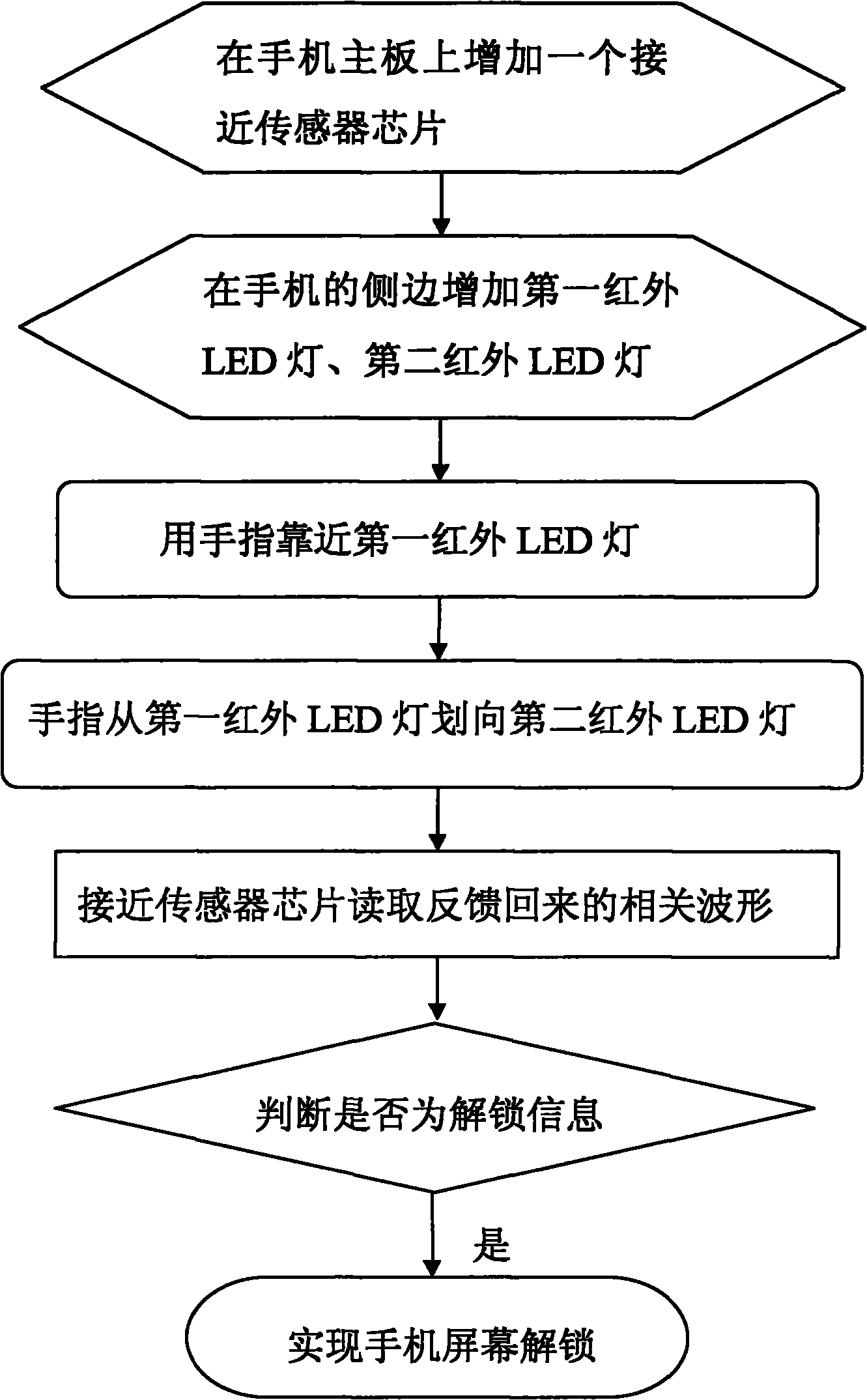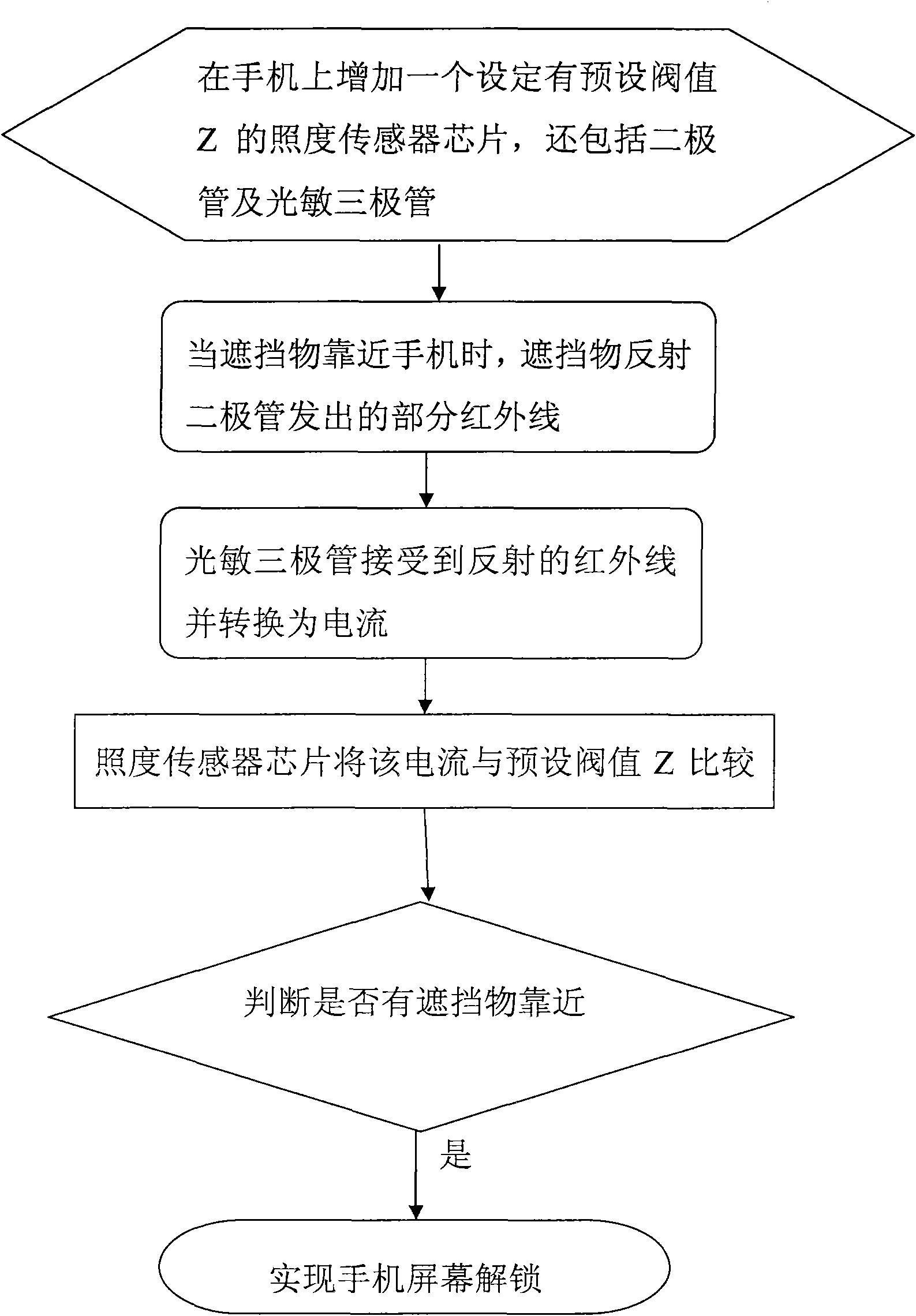Unlocking method of mobile phone screen
A mobile phone screen and screen unlocking technology, which is applied in telephone communication, electrical components, branch office equipment, etc., can solve the problem of single form of mobile phone screen unlocking method, and achieve the effect of improving convenience
- Summary
- Abstract
- Description
- Claims
- Application Information
AI Technical Summary
Problems solved by technology
Method used
Image
Examples
Embodiment 1
[0045] see figure 1 , in this embodiment, the sensor module includes a proximity sensor chip (inside the mobile phone 1, not shown) preset with an unlocking comparison value, and a first infrared LED lamp 31 and a second infrared LED lamp 31 arranged on the outside of the mobile phone 1. The lamp 32 also includes a proximity sensor IC2.
[0046] A group of 2 infrared LED lamps is added on the side of the mobile phone 1 , one of which is the first infrared LED lamp 31 and the other is the second infrared LED lamp 32 . The positions of the two infrared LED lights are set on the side of the mobile phone 1, generally adjacent to the position of the side key of the current mobile phone.
[0047] Proximity sensor IC2 is arranged around the infrared LED lamp. Specifically, in this embodiment, the sensor IC2 is disposed between the first infrared LED lamp 31 and the second infrared LED lamp 32 .
[0048] But between the proximity sensor IC2 and the infrared LED light, it is better ...
Embodiment 2
[0056] see image 3 , in this embodiment, the sensor module includes an illuminance sensor chip preset with an unlocking comparison value, and the unlocking comparison value is a preset threshold Z.
[0057] The illuminance sensor chip also contains two tubes related to infrared rays. One is a diode that emits infrared rays, and the other is a photosensitive transistor. The relatively large part on one side of the illuminance sensor chip is composed of diodes that can emit infrared rays, and the smaller part on the other side is composed of photosensitive transistors that can receive infrared rays. When the illuminance sensor chip is working, the diode emits infrared rays, and the light is mainly upward.
[0058]When the user approaches the illuminance sensor (Proximity sensor, also known as the optical proximity sensor) with an obstruction (such as a finger), part of the infrared rays from the diode is reflected by the finger to the phototransistor, and when the phototransi...
Embodiment 3
[0066] see Figure 5 As shown, the direction sensor (Motion Sensor) mainly includes a light-shielding ball 1 in the middle, and also includes an infrared light-emitting diode 2 and a phototransistor 3 . Since the light-shielding ball 1 moves in different directions, the infrared light from the diode 2 is blocked or reflected, and the phototransistor 3 will trigger a photoelectric signal when receiving the reflected infrared light. In this embodiment, the working principle of the directional sensor is used to realize the screen unlocking function of the mobile phone.
[0067] see Figure 6 , first preset an option in the mobile phone software, named "shake to unlock", after selecting to enter, the software requires to set the initial shaking times (that is, the preset shaking value), and record it as a comparison for subsequent unlocking operations value. In this specific embodiment, the above-mentioned preset shaking value is set to three times.
[0068] After the phone sc...
PUM
 Login to View More
Login to View More Abstract
Description
Claims
Application Information
 Login to View More
Login to View More - R&D
- Intellectual Property
- Life Sciences
- Materials
- Tech Scout
- Unparalleled Data Quality
- Higher Quality Content
- 60% Fewer Hallucinations
Browse by: Latest US Patents, China's latest patents, Technical Efficacy Thesaurus, Application Domain, Technology Topic, Popular Technical Reports.
© 2025 PatSnap. All rights reserved.Legal|Privacy policy|Modern Slavery Act Transparency Statement|Sitemap|About US| Contact US: help@patsnap.com



